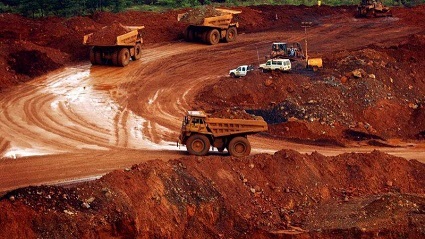By Our Correspondent
NEW DELHI/BHUBANESWAR: The last date to submit any suggestions or disagreements on the mines ministry’s proposals under the Atmanirbhar Bharat initiatives is September 3.The ministry has proposed amending Sections 10A(2)(b) and 10A(2)(c) of the Mines and Minerals (Development and Regulation) Act, 1957 to pave way for auctioning of a large number of potential leases currently blocked in legacy cases. Sources said revenues of Rs 40 lakh crore will be generated through transparent auctions by repealing Section 10A (2)(b and c) of MMDR Act.
“The cases coming under Section 10A(2)(c) of the Act, which stood extinguished on January 12, 2017 as per law, but are still litigated or pursued unnecessarily at various levels, need to be brought to a closure to end the policy stalemate,” the Ministry said in a notice dated August 24.Cases under Section 10A(2)(b) are still disputed in the absence of a specific sunset clause in the act, and they have not reached closure yet, it said.In Odisha in last bidding, the premiums went as high as 150%, and merchant miners are at the losing end.
Sources said that the provision of section 10(A)2 B and C was inserted in MMDR Amendment Act 2015 to safe guard the interest of ML/PL holders whose cases were pending with different State Government at that time .These applications were filed long back as per the prevalent act as applicable in that time. Due to crawling process of government machineries these applications could not be converted in to mining leases in time bound manner. When some massive changes took place on January 12, 2015, the interest of these cases were well safeguarded by bringing the provisions of 10 A2B and 2 C. Though there was a time limit of 2 years in case of 10 A 2C but no time line was fixed in case of 10 A 2B, they said.
Different state govt kept pending all cases of 10 A 2 B for almost 5 years and no conclusive decision was taken over these cases. Now by just one stroke of pen all these cases will be scraped.In these last 5 years, government kept a blindfold over these cases, which is why the cases couldn’t be processed timely. If Central govt didn’t want to allot these cases on mere royalty basis then why government kept these cases in saving clause under 10 A2 B in MMDR Act 2015.Those applicants have put lot of money, time and efforts to keep their respective cases alive and waited for almost 5 years after enactment of amended act, they argued.
Now government want to allot all these blocks through auction process ,as the recent auction held in Odisha fetched very attractive premium and this has completely changed the mind set of state and central government. The second case pertaining to early termination of validity of captive mines by 5 years. The captive mining leases coming under 8A5 category were extended by almost 15 years ie upto 31.03.2030 mainly belonging to Tatas . Now early termination of the captive mines and scraping the provisions of right of first refusal creates lot of doubt at this stage, one of the Koira , Sundargarh based Mines owner said .
Meanwhile, Odisha-based steel firms, which do not have operational captive mines, have asked the government to make it mandatory for all iron ore miners in the state to sell at least half of their produce to Odisha-based sponge iron and steel units unless they consume 50% for their own captive use. Only the balance quantities of ore could be exported to other parts of the country or abroad.
While this may amount to deviation from the auction rules, in the absence of such stipulation, the local industry will suffer a lot and production will take a huge hit, a prominent steelmaker said on condition of anonymity. Tata Steel, which owns captive mines in the state, however, says it does not have any problem of iron ore shortage.
The government estimates that the country will need 892 million tonne of the fuel in FY30 — around 40% higher than current levels — for power generation. Commercial mining: Odisha produces nearly 25% of the country’s total steel. Decreased iron ore production, lucrative exports to other states of India and to other countries are the two primary reasons for the shortage, said the source.
Higher steel price has made the raw material dearer as well. The state produces 110 MT iron ore a year; the last fiscal was an aberration, when the production grew to around 145 MT.Leases for 19 merchant mines, which contributed around half of Odisha’s 115 MT iron ore production in 2018-19, expired in March and 18 of them were successfully auctioned, industry sources said.
The government had extended the validity of all statutory approval of these mines by two years, to ensure the successful bidder can resume production immediately.As on August 1, only three mines — two merchant and one captive — of these 18 could start limited production.
All these three mines belong to JSW Steel, which is dispatching almost the entire production to their own plants, they said.In July, 2020 Odisha disptached only 3 MT against 8 MT dispatch in July 2019. On the other hand, all-time high iron ore prices in international market because of Chinese demand and disruption in supply from Brazil on account of Covid-19, Odisha miners are capitalising on the opportunity.






























